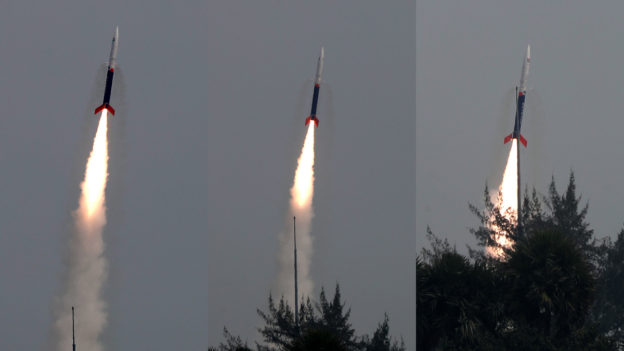One of the satellites launching on November 26 will be the Indian Space Research Organisation’s (ISRO) Oceansat 3. Oceansat series satellites have enabled development of applications dedicated to oceanography and atmospheric studies.
Later this week, on November 26, the scheduled space launch will be historical for many. India’s latest space sector PSU, NewSpace India (NSIL), is set to launch seven satellites as ride-sharing payloads on a PSLV C54. Many dreams and hopes will be aboard this rocket.
ISRO’s latest earth observation satellite
One of the satellites launching on November 26 will be the Indian Space Research Organisation’s (ISRO) Oceansat 3. Oceansat series satellites have enabled the country to develop applications dedicated to oceanography and atmospheric studies.
Oceansat series satellites carry an array of sensors that help study chlorophyll concentration, phytoplankton blooms, and atmospheric aerosols. These studies further aid specialised predictive modelling such as cyclone predictions.
The first Oceansat carried an Ocean Colour Monitor (OCM) and a Multi-Frequency Scanning Microwave Radiometer (MSMR) for oceanographic studies. Oceansat 2 followed ten years later, in 2009, with service continuity for users of the OCM as well as further enhancements. After the scatterometer on Oceansat 2 reached its end of life, ScatSat 1 was launched with another scatterometer on the same Ku-band as Oceansat 2.
The latest satellite, Oceansat 3, will be primarily for continuity but also carry enhancements like simultaneous sea surface temperature measurements.
Space diplomacy: BhutanSat
As part of Prime Minister Narendra Modi’s space diplomacy initiatives, India is aiding Bhutan in building and launching its latest satellite, BhutanSat. Other than launch, Bhutanese engineers worked with ISRO to build the nanosatellite.
ISRO has been working on the primary payload, an optical camera for remote sensing. The country can use the satellite towards agriculture, forestry or land mapping.
PM Modi had promised a satellite for the Himalayan nation in 2020 under the ambit of the government’s Act East Policy.
Earth’s health monitor: Pixxel’s Anand
The Indo-American space startup, Pixxel, is on a mission to build a health monitor for the planet. Pixxel plans to achieve this noble feat via a constellation of satellites featuring hyperspectral sensors. Precisely, Pixxel’s mission is to discover Earth-like no satellite has done before and hopefully solve the pressing issues we face as global citizens. According to the company, their hyperspectral constellation is bound to bring ten times more information than a conventional satellite.
Pixxel launched its Shakuntala demonstration satellite aboard a SpaceX Falcon 9 in April this year. Part of its three demonstration satellites, Shakuntala will now be joined by the Pixxel Anand.
The company’s mission is indeed going to unlock new possibilities. With 24-hour global coverage, protected areas can be monitored like never before. Any instance of pollutant dumping or illegal mining will gravely affect the environment’s spectral signature, which can alert the authorities into action with credible evidence and precise location.
Dhruva’s Thybolts: An IN-SPACe success story
Indian National Space Promotion and Authorisation Centre (IN-SPACe) has been the single window, an autonomous nodal agency of the Department of Space, in a bid to promote private participation in the space sector. IN-SPACe’s success can be witnessed in several private space launches. First, it was Skyroot’s rocket, Vikram-S. This time, Dhruva will launch their Thybolt 1 and Thybolt 2 satellites into the lower Earth orbit. Dhruva, in fact, was the first to sign an MoU with IN-SPACe for space activities like testing and launching satellites and satellite components.
The current Dhruva payloads are CubeSats that the company will employ to support international CubeSat deployers. Their team in Austria has been working on fetching international clients.
November 26 is a launch carrying many dreams. In a way, it captures the Indian space journey from the moment when components were carried on bicycles to multiple private space startups taking off and the national agency extending aid to a friendly country for their space program. The Indian space programme has come a long way.
https://www.financialexpress.com/defence/dreamcatcher-upcoming-space-launch-big-leap-for-indias-private-space-industry/2868539/?utm_source=newzmate&utm_medium=email&utm_campaign=femain&pnespid=COYm6lta6y8dnlOO6Z7OGUFN.hhn36dmrl9MQf0cKsrKxcosaDOA44lE1xIQEHof3Pw9r7.Y





